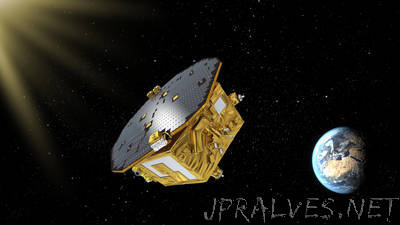
“With the push of a button, final commands for the European Space Agency’s LISA Pathfinder mission were beamed to space on July 18, a final goodbye before the spacecraft was powered down. LISA Pathfinder had been directed into a parking orbit in April, keeping it out of Earth’s way. The final action this week switches it off completely after a successful 16 months of science measurements. While some spacecraft are flashy, never sitting still as they zip across the solar system, LISA Pathfinder was as steady as they come — literally. It housed a space-age motion detector so sensitive that it had to be protected against the force of photons from the Sun. That was made possible thanks to a system of thrusters that applied tiny reactive forces to the spacecraft, cancelling out the force of the Sun and allowing the spacecraft to stay within 10 nanometers of an ideal gravitational orbit. These requirements for Pathfinder were so challenging and unique that LISA Pathfinder flew two independent systems based on different designs - one provided by NASA and one by ESA - and ran tests with both during its 16-month mission. “We were trying to hold it as stable as the width of a DNA helix,” said John Ziemer, systems lead for the U.S. thruster system at NASA’s Jet Propulsion Laboratory in Pasadena, California. “And we went down from there to the width of part of a DNA helix.” JPL managed development of the thruster system, formally called the Space Technology 7 Disturbance Reduction System (ST7-DRS). The thrusters were developed by Busek Co., Inc., Natick, Massachusetts, with technical support from JPL. During the U.S. operations phase, Pathfinder was controlled using algorithims developed by ST7 team members at NASA’s Goddard Space Flight Center in Greenbelt, Maryland. This control system took inputs from the European sensors and sent commands to the thrusters to precisely guide the spacecraft along its path.”
